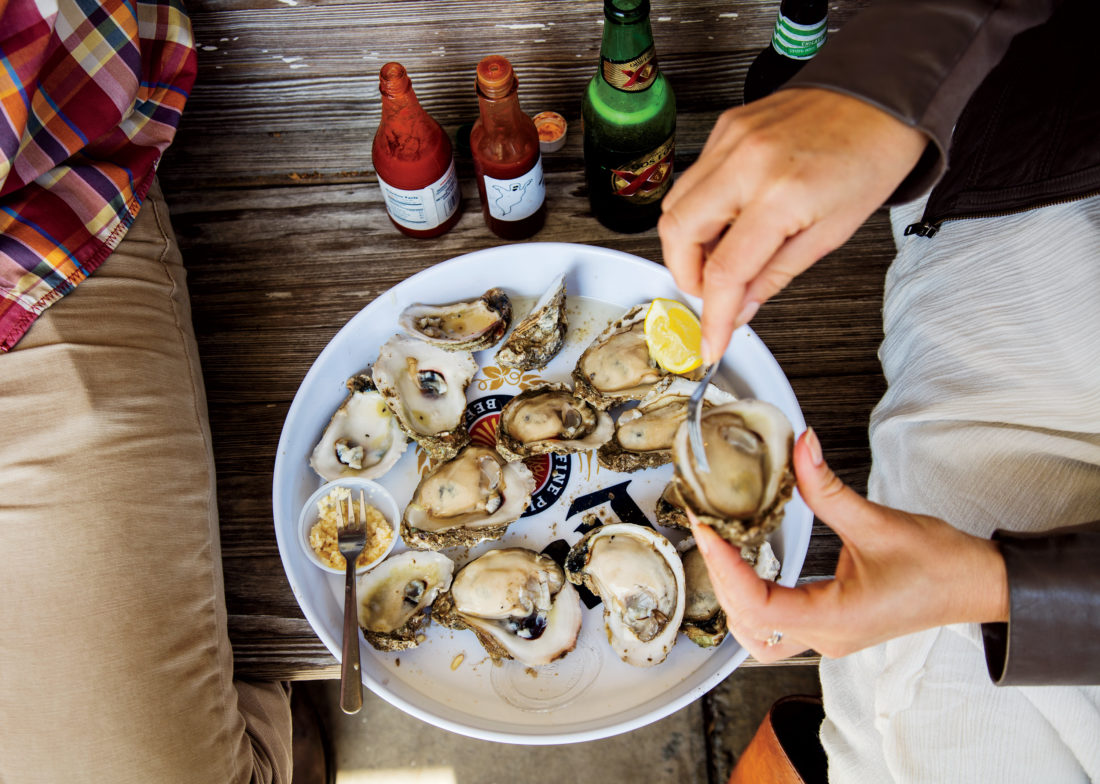Oyster buffs may have recently noticed a marquee bivalve
missing from menus: the Apalachicola. The eponymous bay on the Florida Panhandle—once the source for 90 percent of the state’s oysters—is suffering from upstream population growth and drought. The good news: By heading straight to the source, you can champion the struggling industry and enjoy one of the best oysters in America at its freshest.
What Makes Them Special
Nutrient-rich freshwater flowing in from the Apalachicola River helps these oysters grow famously fat and sweet in the shallow, sandy-bottomed estuary, a terroir also aided by the ideal brackishness and calm that several protective barrier islands provide. To safeguard the prized harvest, mechanical devices aren’t allowed on the bay, so “we haven’t overworked it or torn up the bottom,” says Shannon Hartsfield, president of the Franklin County Seafood Workers Association. Instead, local oystermen shovel bivalves off the bottom with long, rake-like tongs. Nowhere else in the country does this remain the go-to method—which only adds to the allure.
Why They’re in Danger
Georgia, Alabama, and Florida have fought a decades-long series of still-unresolved legal battles over who has the right to the water in the basin formed by the Chattahoochee, Flint, and Apalachicola Rivers. The watershed includes Atlanta, one of the fastest-growing metro areas in the country. Upstreamers have siphoned off more and more of the freshwater that flows into the bay, sending the oyster industry into a tailspin. “Used to be, you could bring in twenty bags of oysters a day,” Hartsfield says. “Now it’s three. Used to be, there were some thirty-five oyster dealers here. Now there are maybe four.” Apalachicola oysters are still plentiful in local restaurants, but they’re dropping off the national market.
Where to Shuck One
Oystermen can’t take visitors out to tong as much as they could when Apalachicolas were bountiful, but those who still do are happy for the extra clams. Fifth-generation waterman Bubba Mashburn will set you up through his Tuckered Out Charters. Otherwise, you’ll find fresh-out-of-the-water oysters on just about any local menu. Settle on the screened porch for a dozen on the half shell at Boss Oyster, a tin-sided seafood joint at the mouth of the river, or sidle up next to a local at Hole in the Wall Seafood for baked oysters and cold beer pulled from a vintage green icebox. Across the bay in Eastpoint at Lynn’s Quality Oysters, you can get the main attraction about any way you want it on the newly installed raw bar: raw, steamed, baked in Parmesan and butter, Rockefeller, popper-style with jalapeños and cream cheese…








